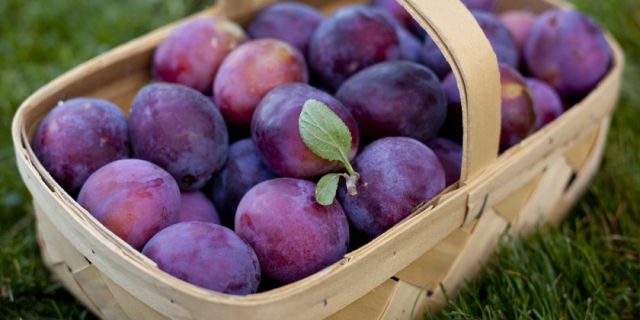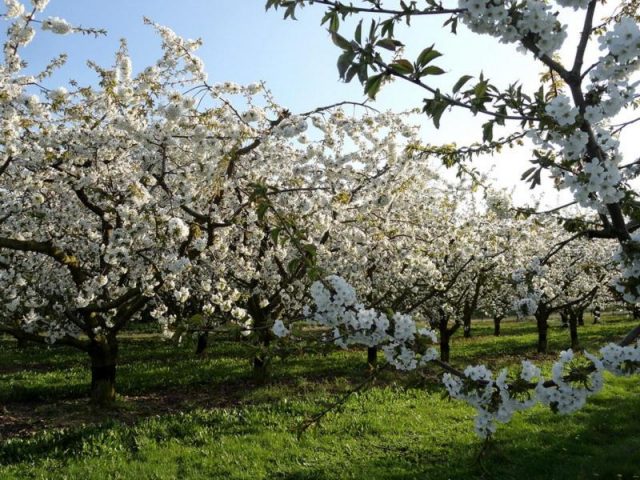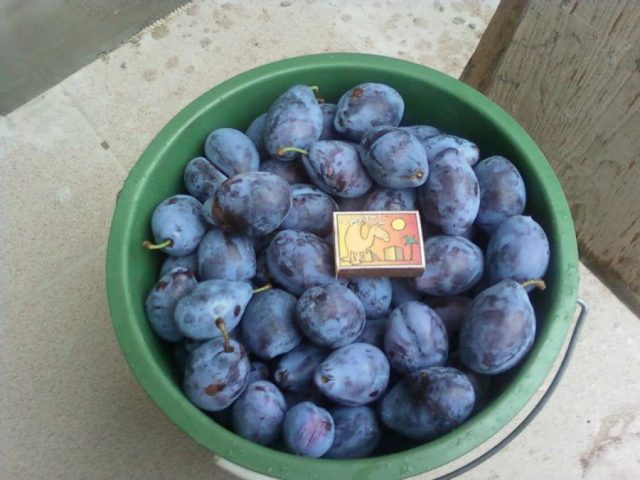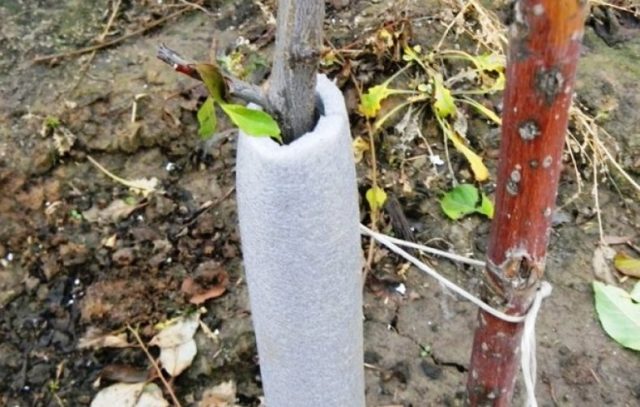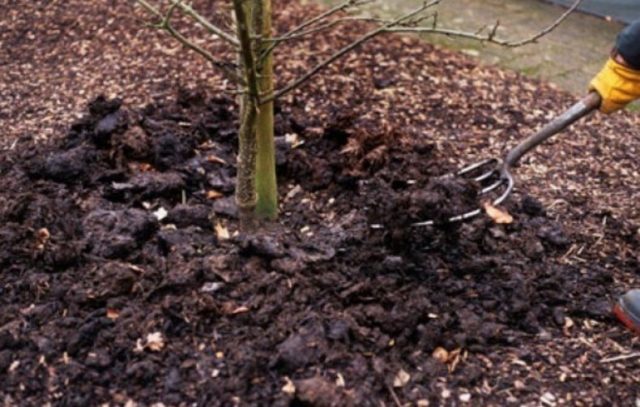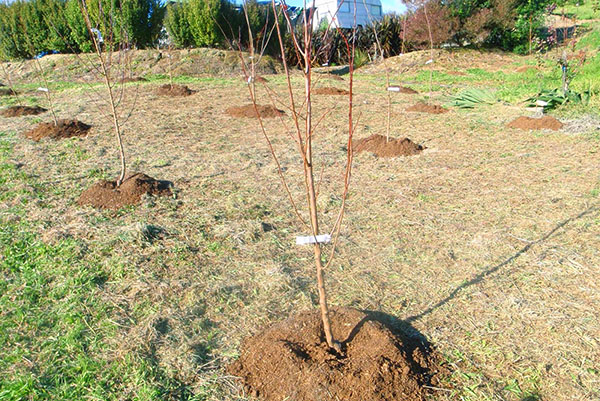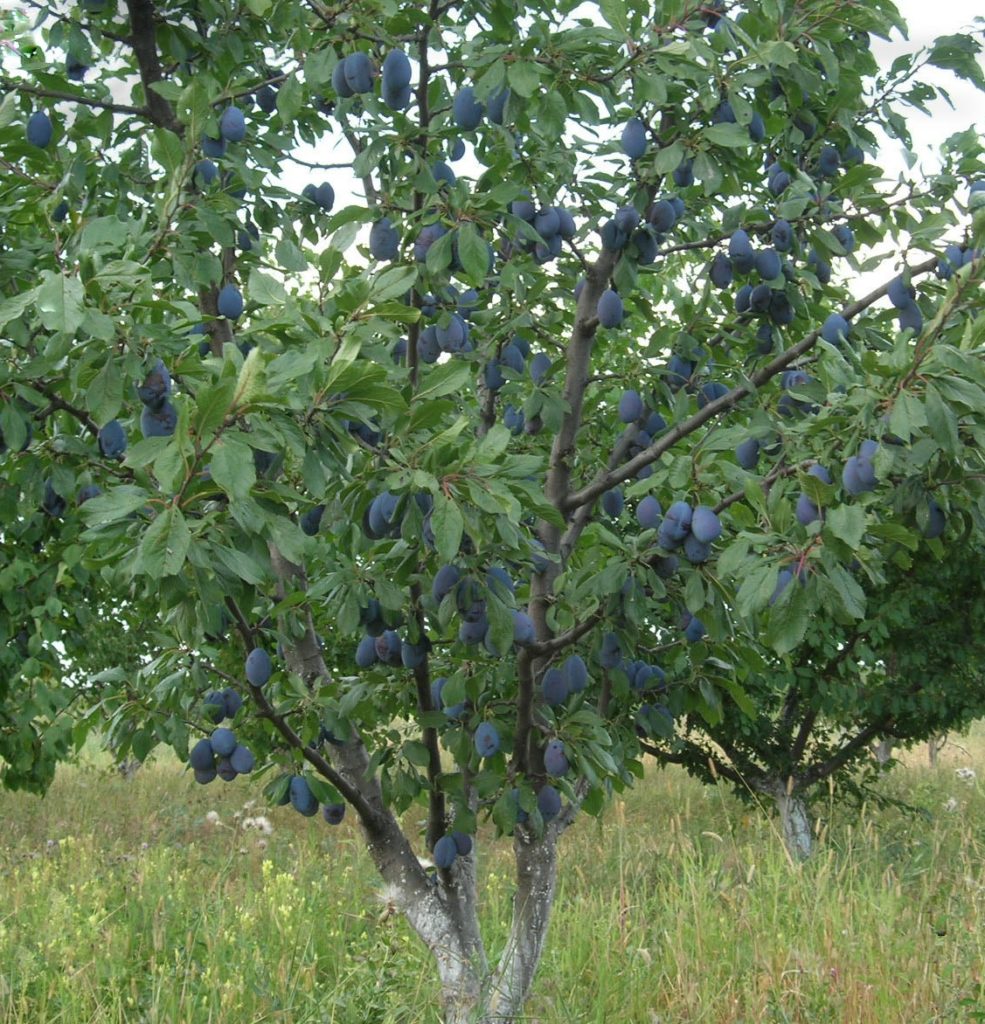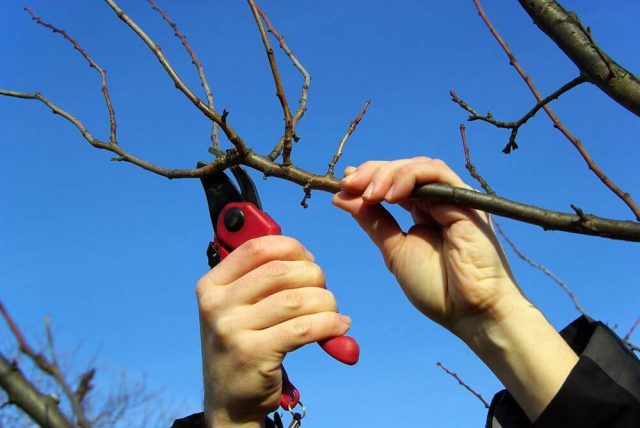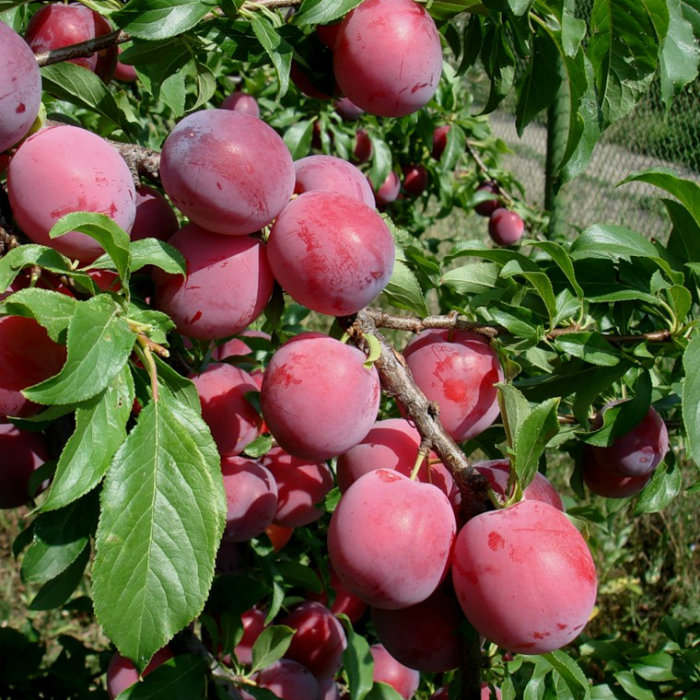Content
Plum Anna Shpet is a popular variety among all representatives of the species. It can withstand temperature fluctuations, unstable climate and weather events. The variety is suitable for growing in different regions of the country.
Breeding history of the variety
Plum is considered a cultivated species that has existed for several millennia. In Russia, it appeared in the distant 17th century. And towards the end of the 18th, they began to use it almost everywhere. Every landowner could plant a variety for commercial purposes. The plum Anna Shpet grows beautifully in central Russia, but she received greater recognition in the Crimea, Ukraine and Moldova.
The plum variety Anna Shpet was bred at the end of 1870 by the German breeder Ludwig Shpet. He practiced his activity by crossing lilacs, and a plum randomly grew next to it. Plum saplings Anna Shpet are considered free in pollination. In the USSR, in the mid-1940s, the Anna Shpet variety became widespread, and only later they became interested in the Rostov region and Krasnodar Territory. By the end of the last century, the plum was being cultivated "by its neighbors" in Belarus.
Description of plum variety Anna Shpet
Anna Shpet's trunk is very high, has a dense pyramidal crown. The bark is grayish. The shoots are thickened and dark. They have brown internodes. The variety bears fruit until "old age". The buds on it are pointed to the apex, the tips are thin. Light green in color. The structure is matte, sometimes there are jagged edges on the edges. There are no stipules, the petioles are shortened.
The flowers are large, light, grow in pairs at once. The stalk is medium in size, and the plum petals are oval in shape with beautiful wavy edges. Stamens are abundant, anthers are yellow. The fruits themselves at the Anna Shpet plum are very massive, up to 50 g. They have dark purple coloring, sometimes with burgundy barrels. They are oval in shape and do not have pubescence like other varieties. The skin is not thick, but not transparent, it is easily separated from the pulp of the plum, sometimes covered with a bloom of wax. The bones are grayish.
Plum pulp Anna Shpet is sweet, dessert, has a yellow-green hue in color. Consistency is dense, but not hard. The juicy inside becomes tart when fully ripe, and the seed grows small. It is easy to separate it from a ripe plum. It is a thermophilic tree that is best planted in sunny cities and countries. The southern regions have more advantages for its growth and fruiting.
Variety characteristics
Plum Anna Shpet is a late variety of fruit seedlings, where fruits ripen only in the middle of autumn. They do not fall or rot, they can remain on the plum for a long time, even until fully ripe, despite the cold weather. The following advantages of this variety are distinguished:
- High fertility of plum Anna Shpet - the fruits can be stored for a long time, and the tree, thanks to self-pollination, can bear fruit every year.
- Large and tasty plum fruits. Small plums usually spoil immediately after ripening.
- Early fruiting by Anna Shpet - still half-ripe plums can be harvested for conservation.
- Late ripening of the Anna Shpet variety.
- Unpretentious care of plum varieties Anna Shpet.
- The ability to store fruits in blanks for more than 2-3 years.
- An increased degree of plum regeneration Anna Shpet.
Such characteristics make it possible to collect large sweet fruits even from an adult 20-year-old plum. One crop gives about 130-140 kg of plums. Anna Shpet will bear fruit in 4-5 years after planting for several decades.
Drought resistance, frost resistance
The variety of this plum is not very resistant to frosty weather, but even with frost it can recover on its own. Still not suitable for growing in cold regions, since Anna Shpet is a thermophilic plant. The harvest will be, but small, not rich. In the southern region, the plum will hurt less, although it does not have any special requirements for soil and care. But drought is not terrible for Anna Shpet, she tolerates it well and gives an abundant amount of fruit.
Plum pollinators
Plum Anna Shpet is self-fertile, but she needs cross-pollination for rich fruiting, otherwise you can count on a meager harvest. The best pollinators are plums:
- Victoria;
- Catherine;
- Renclaude Altana;
- Renklode is green.
The Shpet plum bears fruit every year and is very abundant. But even she needs to be well cared for to harvest the delicious fruit.
Productivity and fruiting
The stability of the harvest of the Anna Shpet variety is achieved through agricultural technology, and if an adult tree has once yielded a rich harvest, it will always produce 100 kg of at least ripe fruits. Plum bears fruit, from 5 to 15 years old, 60-80 kg, and the adult is twice as large.
Scope of berries
Plum berries Anna Shpet are more often exported, and due to the peculiarities of the variety, they may not lose their taste for a long time. Farmers do not process the fruits, only place them in commercial refrigerators to preserve the appearance and taste. It is good to make various twists and compotes from them, and in cosmetology, oils of pits and plum seeds are used.
Disease and pest resistance
Anna Shpet is not very resistant to moniliosis and polystygmosis. The latter is a disease manifested by spotting on plum leaves. Infection can be noticed at the beginning of the summer season after heavy rainfall. Yellow spots cover the leaves, and then rot, forming reddish spots.
To protect the fruits of the Anna Shpet variety, you need to treat the bark with Bordeaux liquid or substances with fungicides. After harvesting, before severe frosts, the leaves are sprayed with copper sulfate, like the soil around Anna Shpet. Fallen leaves will serve as a breeding ground for pests, so timely collection is mandatory.
Moniliosis affects not only the leaves of the plum variety. Shoots become reddish, dry quickly. Anna Shpet's berries have a pronounced gray growth, which is why they rot. The fight against this disease is the same as in the case of the previous one, only all diseased branches and infected shoots are subject to treatment.
Rodents also love to feast on the trunks of a fruit tree, so the plum is covered with a dense cloth or polymer net. Hares and mice will also not be able to get close to the trunks, and the frost will not damage this variety so much.
Advantages and disadvantages of the variety
The characteristics of the Anna Shpet variety indicate that the fruits of this variety are very sweet, juicy, like a summer dessert. This is an incomparable advantage, because few fruit trees can "boast" of fruits of this quality. A rich harvest, the ability to withstand the winter is a big plus for many farmers. Of the shortcomings, only diseases and attractiveness to small pests are distinguished.
Landing features
Plum Anna Shpet loves warmth, so the soil should be open. The soil needs treatment, since the end of the winter season implies warming and the appearance of diseases.
Recommended timing
The optimal period for planting seedlings is autumn and spring - it is best to do this in April, when the soil has not yet warmed up, but not frozen. Plum loves the south side, so the planting material must be protected from possible gusts of wind. Drafts should also be avoided; do not plant trees along the walls of houses or garages. This blocks the flow of sunlight.
Choosing the right place
The soil for growing the Anna Shpet variety is good almost everywhere in the middle latitudes. The main thing is fertile loose soil, which should not have a very high acidity. Stagnant groundwater does not tolerate drainage. Trees of this variety should be planted at the lowest point in the landscape, where the water table is above 2 meters.
What crops can and cannot be planted nearby
For a richer harvest, you can plant Hungerka or Ekaterina. Since the house plum Anna Shpet is partially self-fertile, it is recommended to plant Raisin-Eric. Altana will improve the taste, and the Crimean variety will add "blue" to the fruit.
Selection and preparation of planting material
Saplings should have a clear central part of the branch, from which two or three lateral branches extend. What you should pay attention to:
- There should be no noticeable defects on the rootstock and scion. Open roots are well felt, ripened.
- The stem should have a smooth bark surface. This is the main condition, otherwise the tree will not take root or fall on its side.
Landing algorithm
The landing pit is harvested in the fall. If the event is held in the spring, you need to fertilize the soil three weeks before the planting of Anna Shpet's seedlings. In autumn, the soil is fertilized with 100 grams of potassium magnesium or pure manure. Take 7.5 kg per 1 m2... To lower the acidity level, sprinkle the soil with dolomite flour or lime:
- For one pit, 9 kg of compost is taken.
- 160 g of wood ash.
- 1 bucket of sand.
The yield and growth rate of the seedling will depend on how nutritious the composition is. The pit is dug with parameters 0.5 in depth and 0.7 in width. Plum roots are dipped in clay. Eggshells are placed at the bottom of the pit.
Next, the bottom is covered with humus. Then add clean soil and superphosphate - 500 g. A peg is placed in the center. The neck of Anna Shpet's seedling should be 5 cm above the soil level. Around the hole should hold 25 liters of water.
Then everything is covered with sawdust and dry earth. More algorithm in video
Plum follow-up care
After planting, the plum must be processed. Care consists in adhering to agricultural techniques. The culture of the variety, although unpretentious, still needs mineral fertilization. Activities need to be carried out systematically. You need to water the plum 3 times:
- when the shoots started;
- when the fruits appeared;
- after harvesting the plum.
On average, the figure is 40-45 liters per one plum of this variety, but the total amount depends on the age of the Anna Shpet plum. The earth is moistened to work better with it, the soil becomes pliable at a level of 20-30 cm, but water should be handled carefully - the tree does not like either drought or excessive flooding.
Pruning is carried out immediately after planting Anna's seedling. The twigs are cut by a third in the first 4 years, then by a quarter. When forming the crown, a sparse-tiered technique is used. After each time, processing with a garden pitch is necessary.
Top dressing is carried out by months:
Season | View | Period | Fertilizers and proportions |
Spring | Root | Before flowering | Prepare a solution of urea and potassium sulfate 1: 1 with the addition of 30 liters of water for one tree |
During flowering | A mineral-type solution is being prepared with the addition of urea and water in a 2: 1 ratio. They need to water the plum - 4 liters for each seedling | ||
After | A solution of mullein and water 3: 1. One tree accounts for about 40 g of superphosphate | ||
Summer | Foliar | The beginning of June | 3% urea solution - spray the tree |
Autumn | Root | Mid - end of September | Potassium chloride and superphosphate 2: 3 per 10 liters of water. Water 30 liters one tree |
Here you need lime, which will moisten the soil - disinfection is carried out by introducing a solution of chalk and ash. Once every 5 years as needed | |||
Before digging, sprinkle with manure or compost (15 kg) with the addition of ammonium nitrate - 50 g |
For wintering, trees need to be covered with synthetic material, the trunks must be whitewashed. A nylon mesh is also used if there are rodents. So growing plums Anna Shpet will be a pleasure and not a hassle.
Diseases and pests, methods of control and prevention
If you properly care for the Anna Shpet variety, rodents and pests will not be scary. However, to deal with them, it is still worth stocking up on some means:
- A carbamide solution is used against the plum moth.
- You can get rid of the sawfly by using "Karbofos" or "Cyanox".
- "Nitrafen" and "Metaphos" are used against the fruit red tick.
Conclusion
Plum Anna Shpet grows in the southern regions and is famous for its sweetness and good frost resistance. The care is simple but thorough. To get large, rich yields of Anna Shpet, you need to look after the seedlings and prepare the soil. Then the plum will delight you with juicy pulp.
